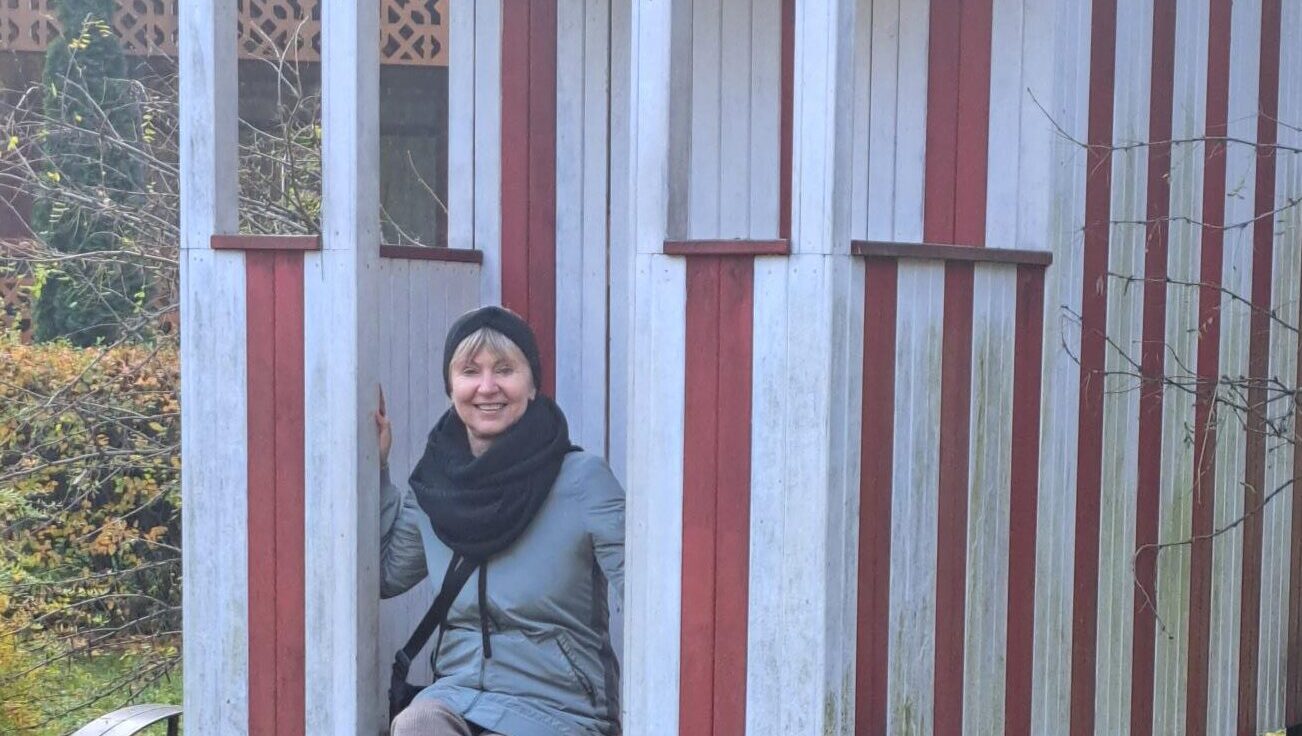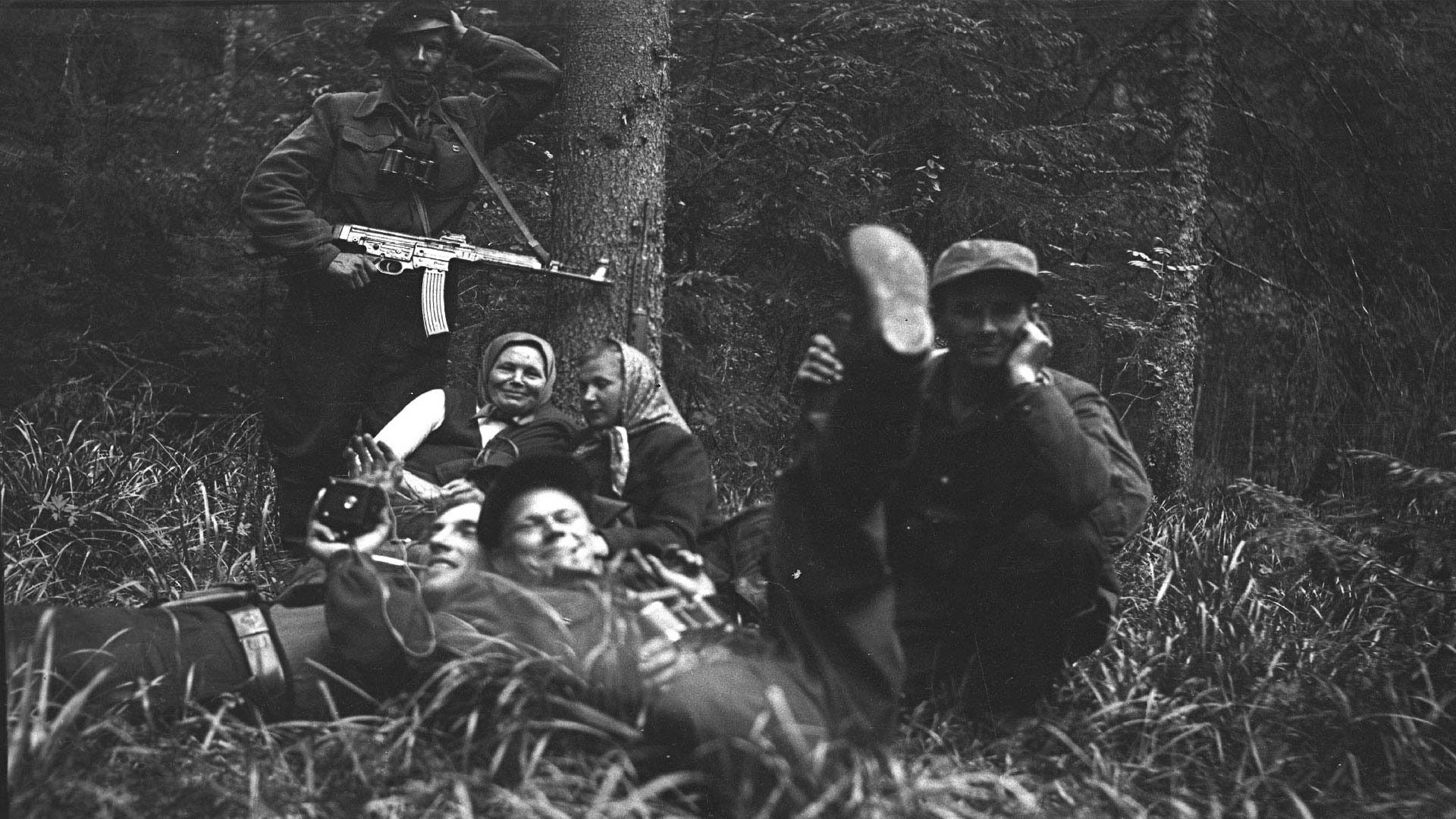I did a double take. “How did that get there?” I wondered. It's difficult to say who exactly painted it there, but it was the first clue as to what this place is all about.
Through the opening on the other end of the tunnel, you are greeted by dominating mountains that perch above charming chalets built with wooden roofs, pale middle sections, and stalwart foundations. These are the main buildings of Kandersteg International Scout Centre (KISC). A home to Scouts and Guides from all over the world who seek a “Permanent Mini Jamboree.”
For anyone active in Scouting, this is a place where, as an individual or with your troop, you can spend an extended period of time practicing outdoor skills, making new friends, and living out the principles of Scouting in a place so well suited to it.
The location is a gem. KISC is located in the Swiss Canton of Bern, with Bern, the capital city of Switzerland, an hour away. Yet, there is seclusion to be found. The town of Kandersteg is reachable by way of car shuttle trains that go through the Lötschberg Tunnel. When you arrive at KISC, you'll see how it's tucked away in the back of a tall-sided glacial valley. Clouds effortlessly gather here, providing abundant amounts of precipitation, including during the summer. When there are clear days, they are glorious, with some of the crispest air you'll ever breathe. You can almost taste the nutrients.
Right next to the chalets is the Kander river, which flows confidently through this stretch of the Bernese Highlands. Going up from town on a gondola lift, to an elevation of 1,578 metres, you can gaze at the breathtaking Oeschinen Lake and the clouds that clip past Blüemlisalp massif. Nearby is a popular “mountain coaster” where you can bolt down a winding single track on a cart.
These recreational pursuits bring Estonian Scouts and Guides all the way to Switzerland, but they also make the trip for reasons of professional development. In a 2008 issue of the Eesti Skautide Ühing (Estonian Scout Association) magazine, Ott Maidre from Tartu wrote glowingly about his experience at the centre.
After hearing of volunteer opportunities at KISC from an executive of the ESÜ, he sent in an application and résumé, which led to him being offered a three-month-long volunteering opportunity. It was a whirlwind of new experiences. Maidre found himself craning his neck to admire the scenery. He lived with a roommate from Bhutan and one from the United States, emphasizing cultural differences but also the shared ambitions they had. He received two weeks of training and was then assigned to cleaning the washroom and shower facilities, kitchen duties, and assisting customers in the KISC store. Hard work was countered with play: jokes, singing and dancing, splashing water around, campfire performances, and popping in for refreshments at the Hotel des Alpes. These were situations where, among other volunteers, English was spoken every day, sharpening his English language skills.
“Pinkies”, the pink t-shirt wearing volunteers at Kandersteg, are said to help “over 12,000 guests from more than 60 different countries every year.” KISC offers short-term (as brief as two weeks) and long-term (contracts up to three years long) volunteering positions that cover volunteers' on-site accommodation, food, and spending money. Volunteers can work in housing, reception, catering, and grounds maintenance; or in office-based jobs like event management, finance, and marketing. Those who are or have been involved as Scouts or Guides may want to take a look at some of the volunteer openings at kisc.ch , in case there's something of interest.
Due to its surroundings, Kandersteg is a good starting point for high adventure trips. In the summer of 2016, a group of 14 Estonian scouts from Tartumaa went hiking in the area, reaching high altitudes where there was still snow on the ground. They got acquainted with rappelling and Via Ferrata/Klettersteige (Italian for “iron path” and German for “climbing path” respectively), a form of climbing that involves moving on metal routes affixed to the sides of mountains.
From my own pre-teen Scout experience camping at KISC, we had a lot to keep us busy, from group cooking shenanigans to wilderness survival merit badge lessons where we slept under the stars in improvised bivouacs. Between this type of visit and volunteering at the chalets, there are a few different approaches to staying at KISC.
KISC will soon celebrate their centenary, as 2023 marks 100 years since the old chalet and surrounding land was purchased to make the centre. They have already started preparing for their celebratory events, with the hope of bringing in many visitors from abroad throughout the year.
Since 2002, KISC has been displaying the national flags of the current year's Scouts and Guides from one of their chalet buildings. Once they know you're there, they'll put your requested flag up, for which the Estonian and Canadian flags are available. Sitting underneath them on the steps of KISC, after a long day of trail walking, there is a feeling of belonging in an otherwise unfamiliar place.




